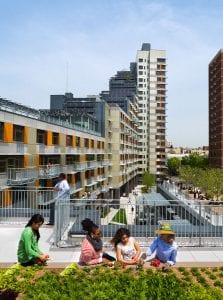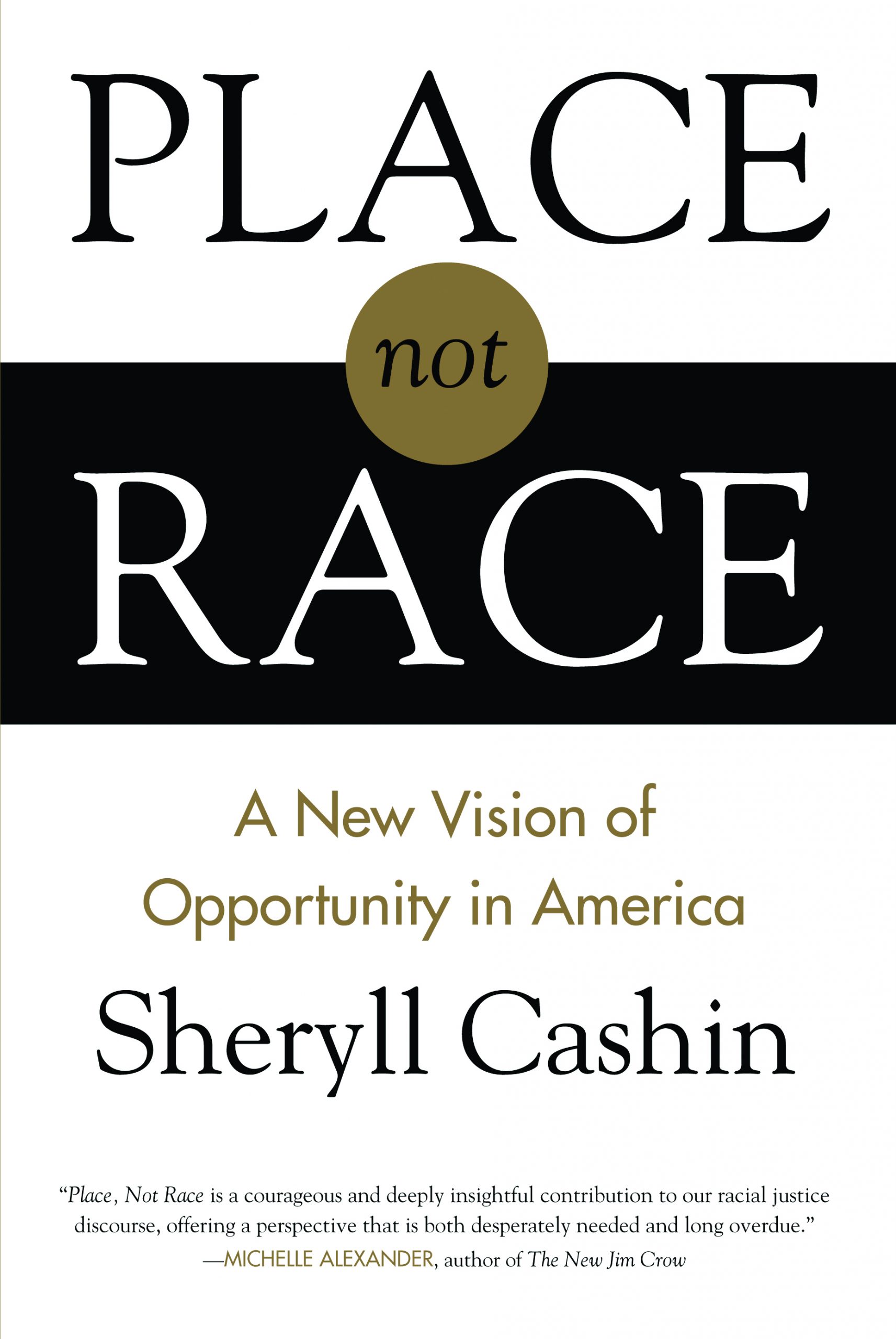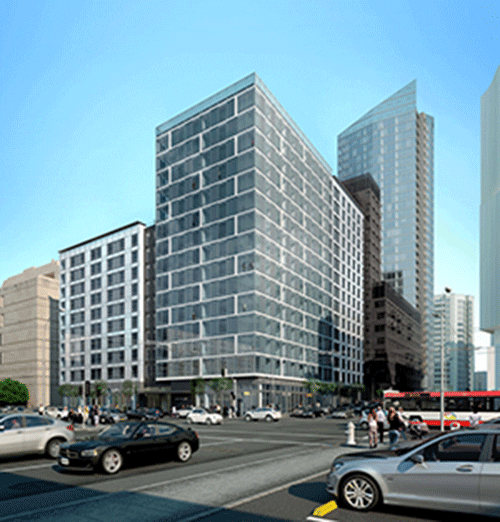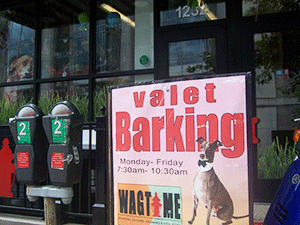
A rooftop garden at Via Verde, a LEED-certified mixed-income housing development in New York City’s South Bronx. Courtesy of the U.S. Environmental Protection Agency
Initially, none of the low- and moderate-income renters at Westhaven Park, a redeveloped former public housing project northwest of Chicago’s Loop, were involved in its community garden. Although Westhaven Park’s predecessor, Henry Horner Homes, had a large and vibrant community garden, the new garden was thought up and established by people who owned market-rate homes in the neighborhood and were frustrated by the many vacant lots nearby. Those homeowners found a grant to pay for raised beds on one of the lots.
“The condo owners’ idea was that a community garden would provide a way for neighbors with a common interest in gardening to do it affordably while connecting with each other,” says Lisa Young, Westhaven Park’s resident services coordinator.
Once the garden began to yield greens and carrots, it attracted the renters’ interest. Soon, the garden became the place within Westhaven Park where residents met across the yawning income divide.
Bart Mitchell, who directs Boston-based housing developer The Community Builders, says this kind of income mixing was a big factor in the comeback of Boston’s South End neighborhood from the 1970s.
Gentrification that began at that time could have led to the poor being entirely priced out. Instead, he says, an infusion of government funding, targeted for mixed-income projects on prominent sites within the South End, yielded a more sustainable result. The neighborhood, which had decayed into a kind of Skid Row, now has many luxury homes, but it also has a sizeable number of units protected as affordable.
“People feel a lot of joy in that mixing—there’s an enormous appetite for it,” says Mitchell.
Mixed-income housing became a phenomenon in large part in reaction to the perceived failures of many large public housing projects. Those developments physically isolated their poor residents from surrounding neighborhoods and suffered from a lack of sustained funding for maintenance. Though less visibly, many privately owned projects had similar problems.
A number of large mission-driven developers have taken the plunge into mixed-income housing through redeveloping public housing, first through HOPE VI, and now the Choice Neighborhoods program, which succeeded it; in some cities, notably San Francisco, local government and developers are collaborating on their own version of that federal program.
Other developers, instead of redeveloping existing sites, are building new mixed-income projects from scratch, like Via Verde in New York’s South Bronx. Jonathan Rose Companies saw an opportunity to provide affordable housing in an area that for decades has been very poor.
Getting the Mix Right
One of the first questions in mixed-income housing is: What is the mix? Who is included, and what percentages of each?
In public housing redevelopment, public housing dollars dictate to a significant extent how many public housing units must be included. This is especially true in San Francisco, where one of the goals is to have every public housing unit replaced. (A major criticism of many early mixed-income redevelopments was an overall reduction in actual public housing units.)
While the old public housing projects were often huge, the redevelopments that replace them have the potential to be even larger. Many of these projects occupied what is now seen as prime real estate, so there is an urge to capture more land value by adding density. That means an opportunity to have a sizeable number of homes for each of three economic groups: (1) people who can pay market rate; (2) people who need some subsidy, often those making between 40 and 120 percent of area median income. Sometimes this segment of units is more narrowly targeted to 50–60 percent of AMI if the units are funded with low-income housing tax credits. In either case, units targeted to this group are often, confusingly, just called “affordable”; and (3) people with extremely low and often fixed incomes who qualify for public housing.
Potrero Hill, which is about to be transformed from a neglected, low-slung public housing development into a mixed-income, high-density one in south San Francisco, will have up to 1,600 homes when complete, of which just over a third are replacing public housing. Another 40 percent will be market price, while the remaining smaller share will serve people at 40 to 120 percent of the area median income.
The overall income mix in Westhaven Park, as in all public housing developments that were replaced through Chicago’s Plan for Transformation, is intended to be one-third public housing, one-third affordable, and one-third market rate. That even division is a standard across the nation, though not everyone thinks it’s always the best.
“I don’t believe there’s one formula that works,” says Cynthia Parker, executive director of BRIDGE Housing in San Francisco.
In her city, the middle class is disappearing in the face of ever-escalating housing prices, so BRIDGE is working with the city to prioritize new homeownership opportunities aimed at the affordable income segment. A $310 million bond passed by the city’s voters in November will help make that happen.
Mitchell’s advice for a proper income mix is this: “Don’t make a complete barbell,” by which he means, don’t have a neighborhood where there are lots of poor and rich people, but no middle class. The formula for mixed-income housing seems to be the same as what many believe is critical for the nation.
There’s also the question of “just how closely mixed?” Murphy Park, on the Near North Side of St. Louis, which replaced a public housing project in 1994, is regarded by many as the model for the Hope VI program. One of the many innovations that McCormack Baron Salazar, the lead developer, put into place was to make all the units “float”; that is, a unit funded with public housing dollars one year could morph on the next lease into a home for a family paying market rate.
Not all developers believe its possible to make units easily interchangeable among income groups. At Potrero Hill, lead developer BRIDGE Housing will mix market-rate units in the same buildings with those dedicated for former public housing tenants. But all the “affordable” units are planned to be in their own blocks because those units are financed with low-income housing tax credits, and BRIDGE wanted to maximize the value of those credits. Parker says the agency is still evaluating that strategy.
At a multifamily building in Chicago’s Westhaven Park, on the former site of the Henry Horner Homes public housing complex, Brinshore Development and Michaels Development Company planned a mix of 113 units, of which 32 are designated for public housing rentals and the rest, market-rate condominiums. All of the rental units are one-bedroom, making it unlikely that there will be many families with children present.
In most of these redevelopments, however, the goal is to create mixed-income neighborhoods with less emphasis on integrating buildings—a contrast with city inclusionary programs, which often put a premium on having affordable units in otherwise market-rate, and sometimes luxury, buildings.
Making It Work
Peter Levavi, who has worked since 2000 for Brinshore Development LLC, a mission-oriented for-profit developer in Chicago whose public housing redevelopment projects include Westhaven Park, identifies three criteria for financially successful mixed-income developments: First, “shoot for the highest common denominator.” Quality cannot be sacrificed to pay for lower rents. Second, in most places, market-rate residents must perceive they are getting a good value, since they are choosing a mixed-income community over one that isn’t, which may affect how high market rents can be set. Third, prioritize reducing crime through such strategies as security patrols (which may include tenants as participants) and cameras on buildings.
A mix of incomes is often considered a way to cross-subsidize affordable units in this age of diminished funding for public and affordable housing. This can work in very high-end markets like San Francisco or New York, but elsewhere, that discount to attract market-rate residents makes it all but impossible for market-priced units to even pay their own way. The exception to this is inclusionary zoning developments, where cities require a portion of affordable units as a component of an otherwise market-rate project. In these cases, often the inclusionary housing is built in a location where older housing previously existed. The increase in land value with the new housing is enough for market-rate units to subsidize the affordable ones.
But in many other cases, it’s a dirty little secret in the trade that affordable housing often helps pay for market-rate units, rather than the other way around, says Willie Jones, a housing developer with The Community Builders organization.
“The truth is, your affordable units tend to be over subsidized,” says Jones. “The trick is to get some of the money from the lower-income units into the other income tiers. You may have tax credits, HOME funds, trust funds. You may be able to use those sources to pay all your land costs, for example, so market-rate units don’t have to pay full cost.
“A lot of people just don’t want to know about that. But if you didn’t do it, you wouldn’t have mixed-income housing.”
Designs for Better Living
The move toward mixed-income housing came along at about the same time as New Urbanism, a design movement that favors building on a street grid, with retail stores and services and civic uses like schools and daycare centers strategically located within walking distance of much of the population.
Where large housing developments that warehoused poor residents tended to be cut off physically from adjoining neighborhoods, the New Urbanism ideals embraced by programs like HOPE VI ushered in an era of trying to blend the site plan for mixed-income projects seamlessly with neighboring streets and housing types.
Charlesview, a project-based Section 8 development in Boston’s Allston district, is an example. It was originally a concrete, inward-looking set of buildings, built in the 1970s in an isolated section between Harvard Business School and a historically single-family housing neighborhood. In 2013, the site was swapped in a land deal with Harvard University and the roughly 200 apartments were moved to a new site a half-mile away.
The new site has mid-rise apartment buildings above retail spaces on a major road, and behind them is a mix of townhomes and “triple-deckers,” in keeping with the traditional look of the neighborhood. Twenty of the new units are for homeownership; those face the older homes across the street.
Many tenants in old public housing or Section 8 projects lived in uniform-looking, mid- to high-rise buildings. The trend in mixed-income developments is to provide mostly one- to three-story townhomes instead, so tenants can enjoy private entrances, or share them with just a few others. Potrero Hill represents a compromise of sorts; the public housing tenants will still be in mid-rise buildings, but the “affordable” units are mostly in smaller, individualized homes.
Designing successful environments is about more than housing type or whether one lives on a street grid, of course. Phipps Houses and Jonathan Rose Companies, which styles itself as a “green” developer, emphasized green design in the name of Via Verde, Spanish for “Green Way.” A unique feature of this high-rise of 151 apartments and 71 ownership units, all priced affordably by New York standards, is a series of stair-step ornamental and edible gardens and green roofs that residents can access from the outside of the building.
A recent report by Urban Strategies, the nonprofit affiliated with McCormack Baron Salazar that implements community-building and human services programs in its developments, says a critical factor in mixed-income communities is ensuring that low-income residents perceive they have housing choices, whether they be rental or homeownership, mid-rise or townhome. Having choices also means access to a viable neighborhood school, and a sense that the area is safe.
Bringing People Together, or Trying To
Research by Mark Joseph, director of the National Initiative on Mixed Income Communities, has found that just because poorer and wealthier people are living together in a building or neighborhood does not mean they will feel good about each other as neighbors, or that poorer residents will necessarily see positive changes in their lives. For mixed-income housing to break down social barriers, it will take a willingness to carefully build a sense of community through programs that will be there long after the buildings are complete.
“Nothing works well yet,” says Levavi. “We have all these land mines we’ve tripped over. It’s very difficult for people who have different lifestyles to have anything to do with each other.”
Early on after occupancy of the Westhaven Park Tower, the 113-unit building that is part of Brinshore and Michaels’ redevelopment northwest of downtown Chicago, an issue arose that illustrated the potential complexity of having low-income and market-rate units in the same building. Market-rate condo owners complained that low-income tenants were lounging in the common area near the building entrance. In response, the condo association’s president removed the furniture from the common area. Brinshore then intervened.
“Our property manager called in all of the public housing families one at a time, explained to them the function of a lobby in a condo building, and they all agreed to live with the rules,” says Levavi. “That is, only be in the lobby when fully dressed. Only sit on the furniture when you are being picked up.”
While this may have been cast as a misunderstanding, it’s clear that when the norms of two different income groups living together clash, it is those of the higher-income group that typically win. Maya Dukmasova, writing in Jacobinmagazine about the findings of researcher Charlie Barlow, who moved into a mixed-income redevelopment in Chicago to study the dynamics there, reports: “CHA [Chicago Housing Authority] residents in mixed-income communities are usually quick to express their satisfaction with the new, high-quality dwellings . . . But they also reveal that they continue to live with stigma, only now, its source has shifted from project outsiders to their mixed-income neighbors and the management staff ostensibly there to serve them.”
Willie Jones, who developed housing with The Community Builders for three decades, says a lot of developers run into this kind of problem because they don’t understand the complexity inherent in mixing incomes.
“A lot of market rate developers are used to a relatively homogeneous user, and they plop their product into a very heterogeneous environment,” he says. In developments that have a lot of rentals, there may be a lot of teenagers. A developer has to take that into account in decisions about design and management, he says.
Jones used focus groups at the onset of design for new developments to try to identify the needs of affordable and market-rate residents to make sure they were addressed in the buildings. In the Chicago case, Jones says he would have ensured that the common area was located so that it could be highly visible, to lessen the urge to use the lobby for that purpose.
How to mix residents of different incomes is not just an issue within a development, but also with adjacent neighbors. That was a matter of concern at Charlesview in Boston, where homeowners living nearby were worried about having an influx of renters into the area. In addition to careful siting of new homeownership units to act as a buffer, the developers located a community center so that it was easily accessible to new and existing residents. The center provides a space for yoga and other classes as well as for service providers such as a workforce collaborative.
“The center has created ways [for] people [to] get to know each other in a productive way,” says JoAnn Barbour, executive director for Charlesview, Inc., a nonprofit that owns and manages the project with The Community Builders and a private developer. “There wasn’t a community gathering place in the area before.”
A priority for developers and managers of mixed-income housing should be to minimize distinctions between the different income groups, says Theresa Olison, who manages housing at Oakwood Shores, a former public housing site in Chicago’s Bronzeville neighborhood.
“We don’t have ‘Chicago Housing Authority residents’ here,” she stresses to her colleagues and to other residents, though some of them still identify residents that way. “There’s still this stigma attached, this idea that you’re not clean or you’re more likely to be a gang member.”
When she organizes meetings or activities for the community, market-rate renters are the least likely to show up.
“In their minds, this is just another attempt to force us to live together,” she says. The opposite is true for market-rate owners, who she notes have a significant amount invested in the long-term success of the neighborhood.
Olison makes a clear distinction between “events,” which seem to draw a cross-section of the community, and “programs” like employment services, which are often more appealing to low-income residents. The community center at Oakwood Shores has activities like Zumba workout sessions and other events that attract homeowners and renters, low- and high-income, alike.
Resident governance can be a challenge, too. Levavi recalls a mistake his firm made at Westhaven Park when it organized a meeting for condominium owners, but not for renters. Owners and renters should be part of the same governing structure, he says. Levavi has also noticed that former public housing tenant leaders sometimes perceive residents from other income groups to be interlopers.
Sometimes the most creative solution for bringing lower-income and market-rate residents together is for management to get out of the way.
“Any engagement across income levels is an amazing feat,” says Olison. “Maybe we have to filter our ideas through our residents in order for them to show up and be present as one group. I’m still going to be involved, but if it takes having a resident present ideas to get buy-in, I don’t need the credit.”






What? Mixed Income housing is privatization to cast out truly low income people you fool! See here https://www.reimaginerpe.org/node/1811 Shelterforce indeed.